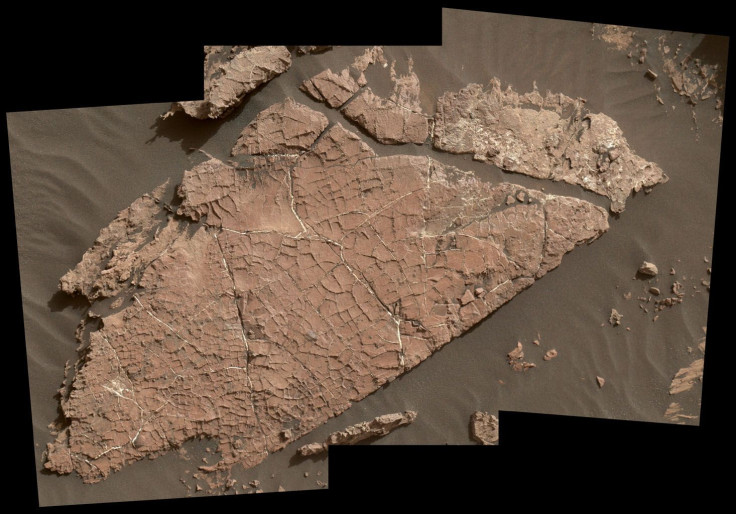Earth-Like Martian Mud Cracks Shed More Light On Red Planet’s Watery Past

A new study revolving around surface cracks spotted on Mars revealed fresh details about the history of water on the Red Planet.
First spotted by the rover Curiosity in 2017, the crisscrossed land features looked pretty similar to desiccation or mud cracks found commonly on Earth. These structures form when muddy sediments lose water and start contracting under extreme levels of dryness and heat.
The observation led NASA to posit something similar might have happened in Mars’ distant past. However, the idea was not confirmed until scientists from the California Institute of Technology, Pasadena, conducted a detailed research to delve into it.
Nathaniel Stein, the lead author of the work, and colleagues studied a coffee table-sized slab of Martian rock, one hosting the mysterious features. Then, using Curiosity's Mastcam, Mars Hand Lens Imager, ChemCam Laser-Induced Breakdown Spectrometer (LIBS), and Alpha-Particle X-Ray Spectrometer (APXS), they analyzed the physical and chemical make-up of the features.
The results of the observation revealed the polygon like structures — made from sediment-filled cracks — indeed formed similarly, under the exposure of air. "We are now confident that these are mud cracks," Stein said in a statement. These features “show that the lakes in Gale Crater had gone through the same type of cycles that we see on Earth."
The study noted that the features were limited to a single layer or rock and debunked all other mechanisms that, people said, could have led to the formation of such structures including thermal or hydraulic fracturing.
That said, it is also worth noting that confirming the presence of desiccation mud cracks has major implications on what we know about the history of mars, particularly the conditions that prevailed several billion years ago.
Scientists know that the Gale Crater, where Curiosity is doing all the science, once had a freshwater lake probably with necessary conditions to host microbial life, but how it disappeared has always been a mystery. Now, noting the location of these cracks inside the crater — closer to the center of the lake bed rather than the edge, scientists posit water levels in the ancient lake might have witnessed a dramatic increase and decrease over time.
"The mud cracks are exciting because they add context to our understanding of this ancient lacustrine system," Stein added. "We are capturing a moment in time. This research is just a chapter in a story that Curiosity has been building since the beginning of its mission." The robotic car-sized rover landed on the Martian landscape in August 2012 and has driven nearly 12 miles in the Gale crater since then. During this journey, it made a number of discoveries including that of a riverbed that first indicated liquid water flowed on the surface of the planet.
The study, titled “Desiccation cracks provide evidence of lake drying on Mars, Sutton Island member, Murray formation, Gale Crater,” was published April 16 in the journal GeoScienceWorld.
© Copyright IBTimes 2024. All rights reserved.











